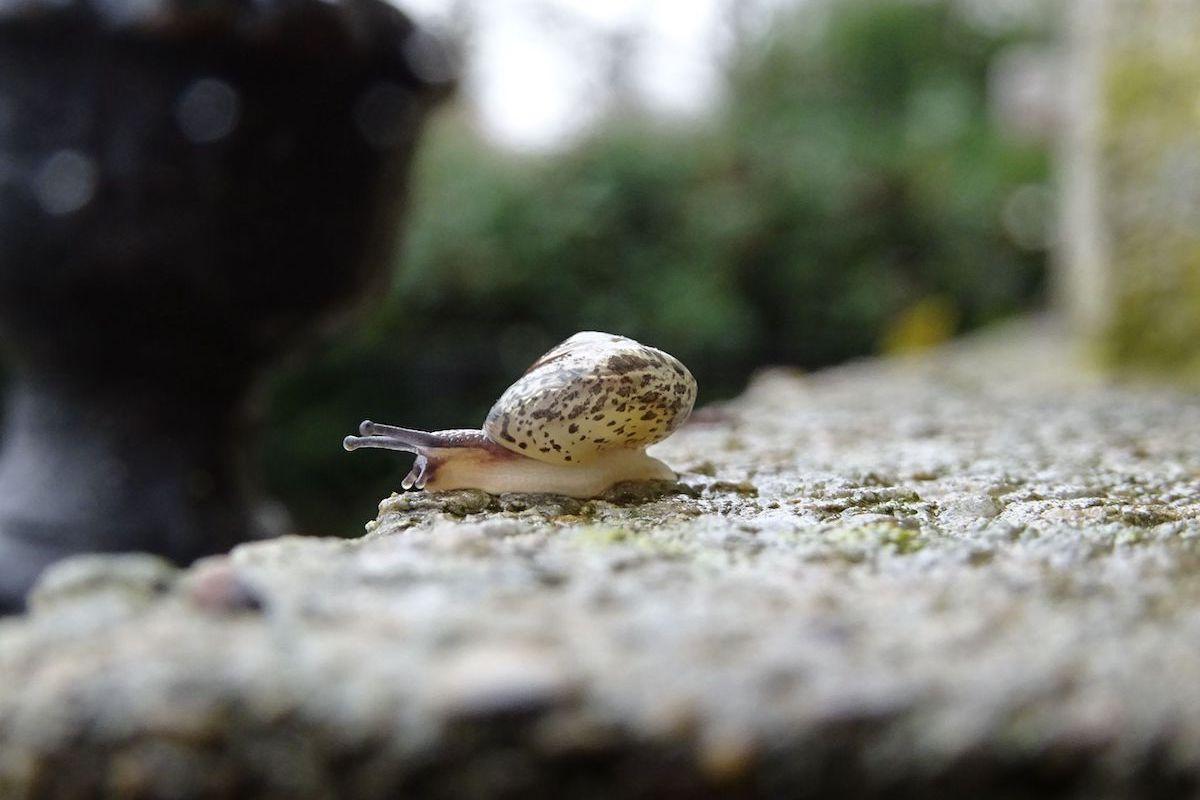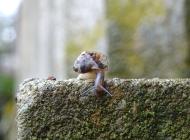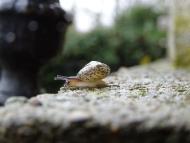Research leads to new discoveries! With their often old stock of trees, the ivy-covered monuments and a small-scale mosaic of different habitats, cemeteries can represent important refuges for many native animal and plant species within cities. However, also numerous non-native species feel at home in cemeteries: Within the project "Leben zwischen Gräbern", researchers from the Museum für Naturkunde Berlin have now recorded for the first time occurrences of the girdled snail at cemeteries in Berlin.
The girdled snail (Hygromia cinctella), which is native to the Italian peninsula, has been spreading in Germany since the mid-1990s. However, no records were known from Berlin and Brandenburg yet. In a study, which has now been published in the journal Mitteilungen der Deutschen Malakozoologischen Gesellschaft, researchers have recorded the species at cemeteries in Berlin. They also argued that cemeteries could have played an important role in the spread and establishment of the girdled snail outside its native range.
At two of the Berlin cemeteries, which were examined in 2022 as part of the study, populations of the species were found to be already well-established. The girdled snail can be recognized by the pronounced, often white-banded edge of the approximately one-centimeter-wide shell. At the cemeteries, the snails were regularly found on the vegetation, in leaf litter and on gravestones. Evidence for predators, which successfully prey on the newcomers, provided the many empty shells with feeding marks characteristic for rodents and predatory beetles.
The researchers also evaluated data from citizen science platforms, where volunteers can publish photos of species they have observed. Based on these data, they were able to retrace that the girdled snail is present in Berlin at least since 2019. The species was probably introduced by humans, potentially with plants or soil. It can be assumed that it will establish in further habitats in and around Berlin in the near future.
The over 200 cemeteries in Berlin cover a total area of more than 1,000 hectares. Cemeteries can represent habitat islands and important refuges for biodiversity within cities. Compared to parks and other urban green spaces, they are characterized by a generally lower disturbance frequency, a comparatively high habitat stability and the presence of many artificial rock habitats in the form of monuments and walls.
Publication
Oheimb, K.C.M. von; Hackenberg, E. & Oheimb, P.V. von (2023): New immigrants among old graves: records of the non-native land snail species Hygromia cinctella (Draparnaud 1801) from urban cemeteries in Berlin (Stylommatophora: Hygromiidae). Mitteilungen der Deutschen Malakozoologischen Gesellschaft, 108, 1-8.
Press pictures
Girdled snail on a tombstone


